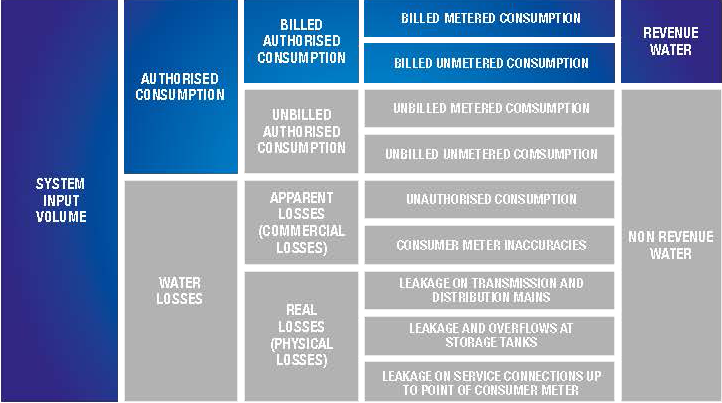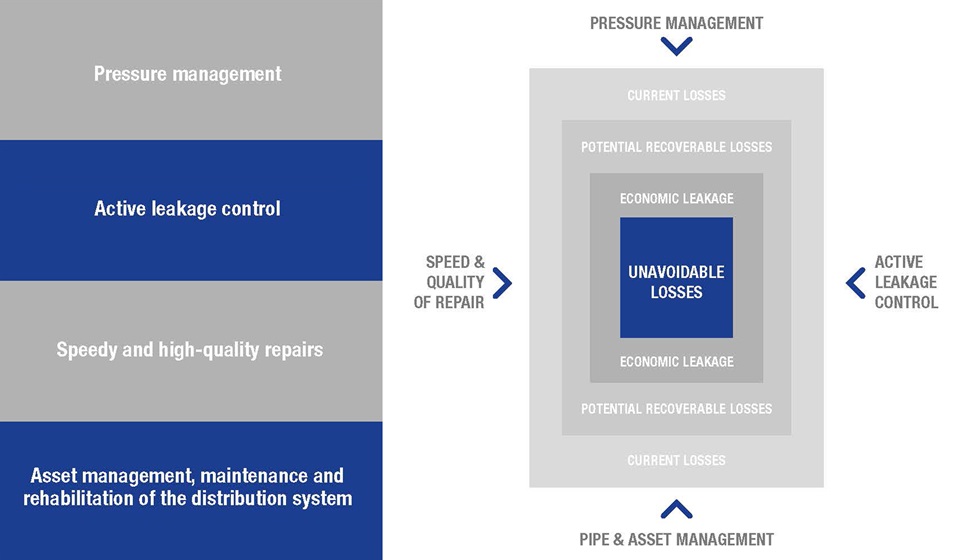
Managing Non-Revenue Water
Water is a scarce resource that we need to protect and use with great respect. We need to secure water for the next generation and a growing population. A major challenge facing many municipalities is how to deal with high levels of water loss, or Non-Revenue Water (NRW). High volumes of clean water are lost through leaks and overflow (real losses), and are not accounted for due to metering inaccuracies at consumers and illegal connections (apparent losses). A large portion of NRW is made up of leakage in the distribution system. The composition of NRW is shown in the IWA Water Balance.

Although there are many reasons for leakage such as corrosion, ground movements, or traffic load, in many cases, bursts have been triggered by high and fluctuating pressure, which could have been avoided by efficient pressure management.
High and fluctuating pressure not only causes substantial leakage and burst, but also brings adverse consequences such as reduced infrastructure lifetime and unnecessary high energy consumption for pumping of the water.
Developing an effective leakage management strategy to reduce NRW is essential. A successful leakage management strategy requires four components:
These factors influence how leakage – s managed and therefore the volume and economic value of leakage – in any utility’s distribution network.
Real Losses can be constrained and managed by an appropriate combination of all of the four management activities shown as arrows. The concept is the IWA “Squeeze the Box Approach”, also mentioned as the “Four Components Approach’.

The large square represents the “Current Losses”, which tends to increase as the distribution network ages. But the amount of losses can be constrained by an appropriate combination of the four components of a successful leakage management strategy. The blue box represents the “Unavoidable Losses”, or the lowest technically achievable volume of physical losses at the current operating pressure.
For each system, at any particular time, there will be an “Economic Leakage Level (ELL)”. The ELL is based on cost-benefit calculation, taking into account the cost to reduce NRW further, achievable energy savings and the cost of supplying with other sources of water.
In most cases, “Pipeline and Assets Management” have considerably longer payback periods than the other three activities “Speed and Quality of Repairs”, “Pressure Management” and “Active Leakage Control”. By prioritizing these three activities, for the first 1-2 years, utilities with initial high leakage levels can usually achieve substantial reductions in Real Losses with short payback periods.
AVK offers various solutions for reducing water loss and therefore optimizing the distribution network. We have also described our solutions covering the four components of a successful leakage management strategy as part of AVK’s Non-Revenue Water Brochure.